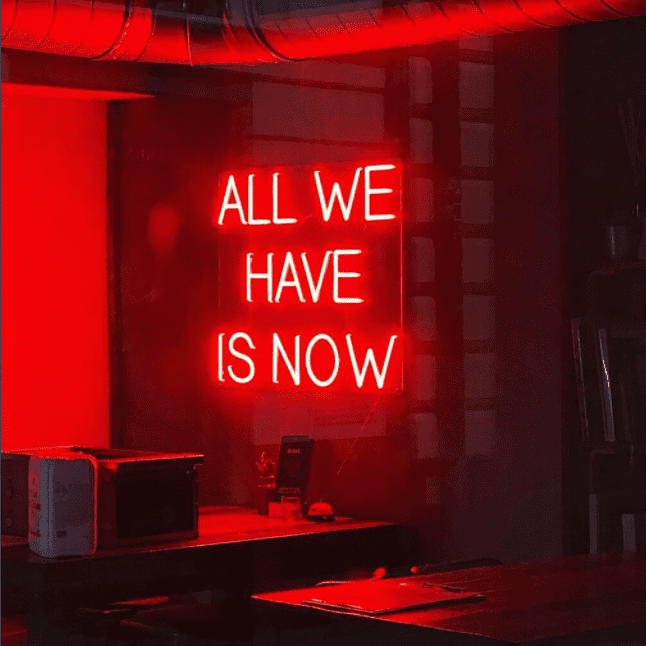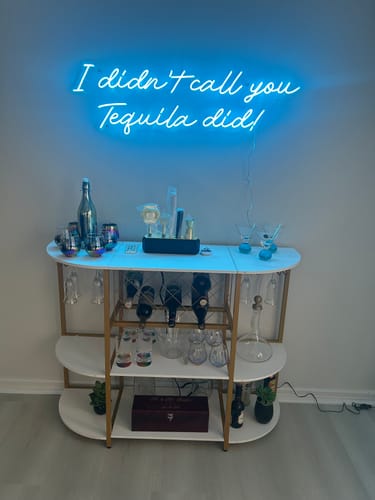We’ll look into whether neon bar sign can cause fires,also explain the difference between glass neon and customize led signs. This will help you pick the best option that’s both safe and stylish.
Are neon bar sign a Fire Hazard? What You Should Know
Neon signs are super popular for homes and businesses, but a lot of people wonder if they’re a fire risk. Traditional neon signs use:
- gases
- glass tubes
- electric parts
which can make them seem a bit risky at first.
The truth is, neon sign go through strict safety checks, and manufacturers have to meet certain standards. So, while the risk of fire is really low, it's still smart to follow some basic safety rules. Make sure to install them properly, check them regularly, and fix anything that looks off.
That said, glass neon bar sign do get warm, unlike LED neon lights, which stay cool. If safety is your main concern, LED neon signs might be the better choice for peace of mind. But overall, both types are pretty safe when used right.

Outdoor vs Indoor Neon Light Fire Hazards
The fire risk of neon lights can differ between indoor and outdoor use. Outdoor neon lights face more challenges since they’re exposed to the weather. Rain, dirt, and extreme heat can increase the chance of electrical faults, possibly leading to overheating. Although it's still rare for neon signs to catch fire, these factors are important to consider.
Indoor neon lights are safer from weather damage, but you still need to be cautious. Make sure they’re installed in a ventilated area and are not easily reached in busy spaces to avoid tampering.
No matter where you install them, bar neon signs must follow strict safety standards. For outdoor use, consider custom neon signs built for weather protection. These are more durable. LED neon signs are often better for outside use since they handle moisture well and are safer in general.
Can Neon Signs Catch On Fire?
When made and maintained properly, neon business signs are usually safe. But, in rare cases, things like electrical problems or broken parts could cause a fire.
For example, if the transformer or wiring is faulty, it might overheat. This LED Signs heat could set fire to something flammable nearby, much like any other electrical device. Neon signs don't have more fire risk than other electronics.
You can lower this risk by following fire safety tips. Always check the sign’s electrical parts regularly. It’s also best to get a professional to install traditional neon signs to ensure safety.
Safety Measures in Neon Signs to Avoid Fire
If you have a vintage neon signs, follow some basic safety steps to reduce fire risk:
- Check it often for damage.
- Make sure wiring stays in good shape.
- Don’t overload power outlets.
- Keep it away from anything flammable.
- Watch for signs of wear or malfunction.
- Clean it regularly.
- Get professional help to fix any issues.
A great alternative is to use LED neon bar signage instead of glass neon. We offer these modern signs with energy-saving LEDs in durable silicone tubes that don’t break easily. They don’t produce heat and use very little electricity, making them safer with less fire risk.
Check out our affordable LED neon options for your home, business, or event!
Can Neon Signs Overheat?
Neon signs usually stay within a safe temperature, not going over 100°F (37°C). But, they can overheat in some cases. Things like:
- Long use
- Electrical problems
- Environmental factors
Overheating signs can be dangerous. Watch for flickering, strange noises, or discoloration—these are warning signs.
To avoid overheating, follow the recommended hours of use, provide good ventilation, and fix electrical issues quickly. Regular maintenance and cleaning also help lower the risk. Remember, traditional neon signs use more electricity than LED bar neon sign ones, so they’re more likely to overheat.
Choose an energy-saving LED or carefully maintain your glass neon sign.
Reducing Fire Hazards in Your Neon Sign
There are important steps for safely installing and maintaining neon signs. Follow these tips to reduce fire risks and keep your sign safe in any space.
Regular Maintenance
It's very important to regularly maintain your neon sign. This includes checking it often for:
- Excessive dirt or dust buildup
- Flickering or color changes in the neon
- Damage to the glass tubes
- Electrical issues or faulty wiring
If you notice anything wrong that could cause a fire, fix it right away. For electrical or damage issues, call a professional to repair it safely.
Proper Ventilation
Even though neon signs have a low fire risk, it’s smart to place yours in a well-ventilated spot. This helps prevent overheating. If outdoors, keep it out of direct sunlight when possible.
Professional Installation
For traditional glass neon signs, professional installation is recommended for safety. Our custom LED bar lights sign are lightweight and easy to hang or mount yourself.
Cleaning
Regular cleaning is key to keeping your neon sign bright and safe. Dust can block heat from escaping and may cause overheating. It can also get into the wiring and increase the fire risk.
Do I Need a Fireman’s Switch for Neon Signs?
A fireman’s switch is a smart addition to your neon sign setup. It lets emergency crews cut the power quickly during a fire. While it’s not legally required, having one boosts safety and helps in emergencies.





